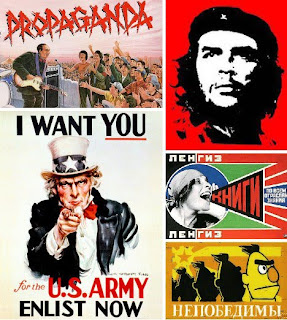<![endif]--> -->
Other useful links:
Before you read this blog, I would like to tell you that this is an extension of my first blog on defining PR and Propaganda. I know that you must be wondering why, well, I have just finished reading one of the chapters (From PR to Propaganda) of PR a Persuasive Industry? by Trevor Morris and Simon Goldsworthy and to be honest I could not resist from expressing my views on it. So, here it goes…
CONTENT
In terms of content, the following points have been highlighted in the chapter:
- PR is persuasive in nature but the industry is reluctant in admitting this fact. Morris and Goldsworthy thinks that the negative connotations attached with the word persuasion is the reason behind it.
I think PR has always been striving hard to establish its own identity in the communication mix. Some people might perceive ‘persuasion’ in the context of marketing, for example, persuading customers to buy a product. Therefore, practitioners want to make this distinction clear between marketing and public relations and this could be another reason for not using the term ‘persuasion’.
- The authors define public relations as the planned persuasion of people to behave in ways that further its sponsor’s objectives. It works primarily through the use of media relations and other forms of third party endorsement.
Here, I would like to highlight the argument made by the authors regarding media relations being the primary tool for PR. In my opinion, even today, developing and maintaining media relations is the primary function of PR. This can be supported by the survey done by PR Week where 51% respondents replied that they see ‘Proactive media relations’ as their agencies main contribution.
- The authors answer the question I asked in my first blog i.e. is PR another expression of Propaganda? According to them, there are no real moral distinctions between the two: both are essentially amoral, capable of serving any cause. However, they see some practical differences which are as follows:
- PR has far fewer levers of influence to pull on.
- PR exists in conditions where many competing persuasive messages are communicated.
- The public relations practitioner, unlike the propagandist, does not have effective powers of censorship or any lasting control over the media.
In addition to this, in my opinion, the difference can also be highlighted in the scale of propaganda and public relations. Edward Bernays said in his 1928 book Propaganda that propaganda is the conscious and intelligent manipulation of the organized habits and opinions of the masses. Public Relations campaign, on the other hand, can and cannot involve masses. Public Relation practitioners often think about their target audience before planning a campaign. The target audience can be a segment of masses or it can be general, nationwide or worldwide audience.
OUTCOME
Reading this chapter was an absolute pleasure. The way both the authors have expressed their opinions is fantastic. If I could describe their writing in three words it would be, CLEAR, PASSIONATE and CRITICAL. Talking about what I learnt from the chapter is the fact that the definitions, theories and concepts of Public Relations written by the most experienced and senior practitioners can be challenged. There is nothing which is absolute in PR and in my opinion; this is the most striking feature of the industry. It is this space and freedom to practice which enables PR practitioners to experiment and implement new ideas and then learn from them. I can say this with a lot of conviction that PR is quite INNOVATIVE.
Other useful links:








